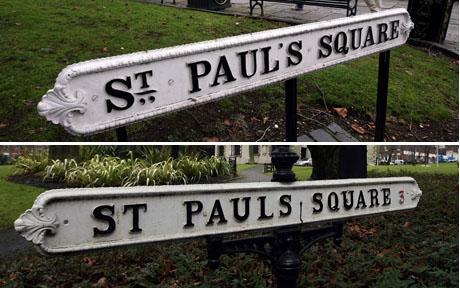Today’s Edmonton Journal reprinted a great article on the apostrophe following the widely reported decision of the Birmingham city council to stop using apostrophes in signs to save money (and not have do deal with pedants). The article, titled When theyre gone, well all be struggling with English traces some of the issues around the use of this “tadpole-shaped bundle of trouble.” It is worth pointing out that apostrophes are important to humanities computing. They are used, among other things, to mark absence. As the etymology of apostrophe suggests, they point away from the text, like a link, to something missing or passed over (in the sense that you don’t pronounce the missing sylable.) I’m less interested in the controversy over punctuation reform as what we can learn from punctuation about markup and the digital representation of text.
- Punctuation is both part of the text and about the text. An apostrophe likewise is both part of the string of characters that we could call the text and yet points to something missing that the reader can fill in. This being of it and about it is what is difficult about the textual ontology of markup. See Markup: Buzzetti and Renear.
- There is, as with most punctuation, a rhetorical dimension to the apostrophe. The word also refers to an exclamatory figure of speech when a speaker turns away and addresses some other imaginary audience often introduced by “O”. For example when Juliet turns away and addresses Romeo in Romeo and Juliet, Act II, Scene 2, “O Romeo, Romeo! wherefore art thou Romeo?” Likewise markup is apostrophic in that it typically addresses the machine rather than the reader. The tags of the anchor element in HTML, for example, are hidden from the reader and provide instruction for the machine should the reader click on the anchored text.
- The single quotation mark on typewriters and early computers (7-bit ASCII) is one of the most overloaded characters. It is used for all sorts of different things from the single quotation mark, to the apostrophe, to the acute accent. Likewise markup overloads certain characters with special meaning through the general strategy of the escape character. The left angle bracket < gets loaded with a new function in XML markup languages: it serves not as a visible character, but as the mark that sets certain text aside to be interpreted differently as code. The text between angle brackets is turned aside to be interpreted by the machine. That we have escape characters or punctuation like an apostrophe that can turn the interpretation is somehow a important to computing and digital representation. That most keyboards have an Escape key indicates how important is the possibility of escape. It is the key to the possibility of interruption of the machine.
The apostrophe could be the punctuation mark of an escape that always was. It turns us away from using text to appreciate what is gone. They’re gone because they are always escaped. Theyre gone because they were never here.
